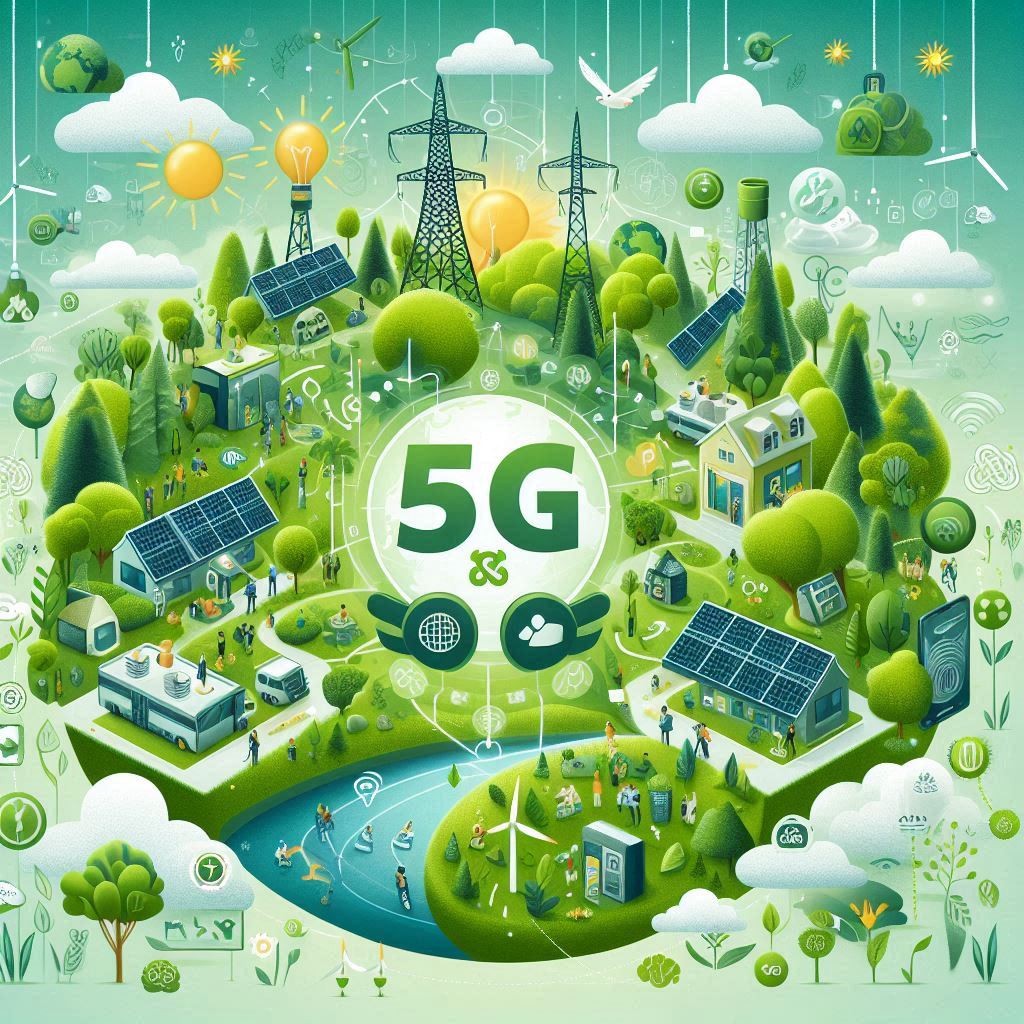The rollout of 5G and the anticipated development of 6G promise to revolutionize global connectivity. These technologies bring faster speeds, lower latency, and greater network capacity, but they also raise significant concerns about their environmental impact. As the world transitions toward more advanced wireless networks, it is essential to examine whether 5G and 6G are truly green technologies or if they pose new sustainability challenges.
Energy Consumption: A Growing Concern
One of the primary environmental concerns surrounding 5G and 6G is energy consumption. 5G networks require a denser infrastructure, with more cell towers and small cells compared to previous generations. This means higher energy demands for base stations, data centers, and network operations.
According to estimates, 5G networks can consume up to three times more energy than 4G networks due to their complex architecture and increased data traffic. The upcoming 6G networks, expected to launch around 2030, will likely require even more advanced computing and energy resources unless energy-efficient technologies are integrated.
Sustainable Solutions: Can 5G and 6G Be More Energy Efficient?
To mitigate energy concerns, telecom companies and governments are investing in energy-efficient technologies, including:
- AI-driven network optimization to reduce power consumption.
- Energy-efficient hardware such as low-power transceivers and dynamic power-saving features.
- Renewable energy sources for network infrastructure, such as solar and wind-powered base stations.
- Advanced cooling technologies for data centers to reduce excess energy use.
Several European nations, including Germany and Sweden, are integrating green energy solutions into their 5G networks, setting a benchmark for future sustainability in telecom infrastructure.
Electronic Waste: A Rising Challenge
With the shift to 5G and 6G, millions of older devices and infrastructure components will become obsolete, contributing to the growing issue of electronic waste (e-waste). Upgrading to new networks means replacing existing smartphones, routers, and telecom equipment, increasing the burden on waste management systems.
Addressing the E-Waste Problem
To combat this issue, several measures are being implemented:
- Device recycling programs: Telecom providers are promoting buy-back and recycling initiatives for outdated devices.
- Modular technology: Developing upgradable network components that reduce the need for full hardware replacements.
- Eco-friendly materials: Using biodegradable or recyclable materials in new network equipment.
The European Union (EU) has been a leader in e-waste management regulations, enforcing strict recycling policies and encouraging telecom companies to minimize their environmental impact.
The Role of Smart Cities in Sustainability
Despite these challenges, 5G and 6G networks have the potential to contribute to environmental sustainability through their role in smart city innovations. These networks enable real-time data collection and automation, leading to:
- Smarter energy grids that optimize electricity distribution and reduce waste.
- Intelligent transportation systems that decrease traffic congestion and lower emissions.
- Sustainable industrial automation, improving efficiency in manufacturing and reducing resource consumption.
Countries such as Denmark and the Netherlands are leveraging 5G technology to build eco-friendly smart cities, proving that next-gen connectivity can also support environmental goals.
Regulations and Policies: The Push for Green Networks
Governments worldwide are recognizing the need for stricter environmental policies regarding network expansion. The EU’s Green Deal includes provisions for sustainable digital infrastructure, while companies like Nokia and Ericsson are committed to net-zero carbon emissions for their telecom equipment.
Some key regulatory measures include:
- Energy efficiency standards for telecom operators.
- Incentives for renewable energy use in network infrastructure.
- Stronger e-waste recycling mandates.
The Future of 6G: A Sustainable Approach?
The development of 6G presents an opportunity to prioritize sustainability from the outset. Researchers are exploring innovative solutions such as:
- Terahertz (THz) communication to reduce energy loss in data transmission.
- AI-powered self-optimizing networks that dynamically adjust power consumption.
- Quantum computing integration, which may lower energy requirements for complex computations.
While 5G and 6G offer groundbreaking advancements in connectivity, their environmental impact cannot be overlooked. By implementing energy-efficient technologies, reducing e-waste, and integrating smart solutions, the telecom industry can ensure that next-generation networks contribute to a more sustainable future.
The key to balancing innovation and sustainability lies in continued investment in green technologies and responsible regulations, ensuring that 5G and 6G are not just faster, but also cleaner.
